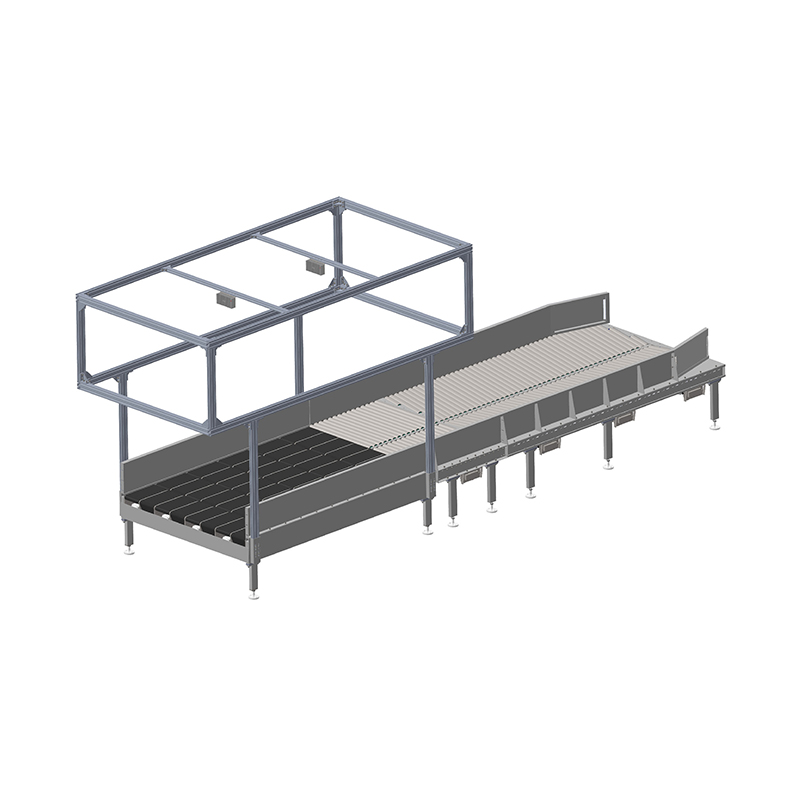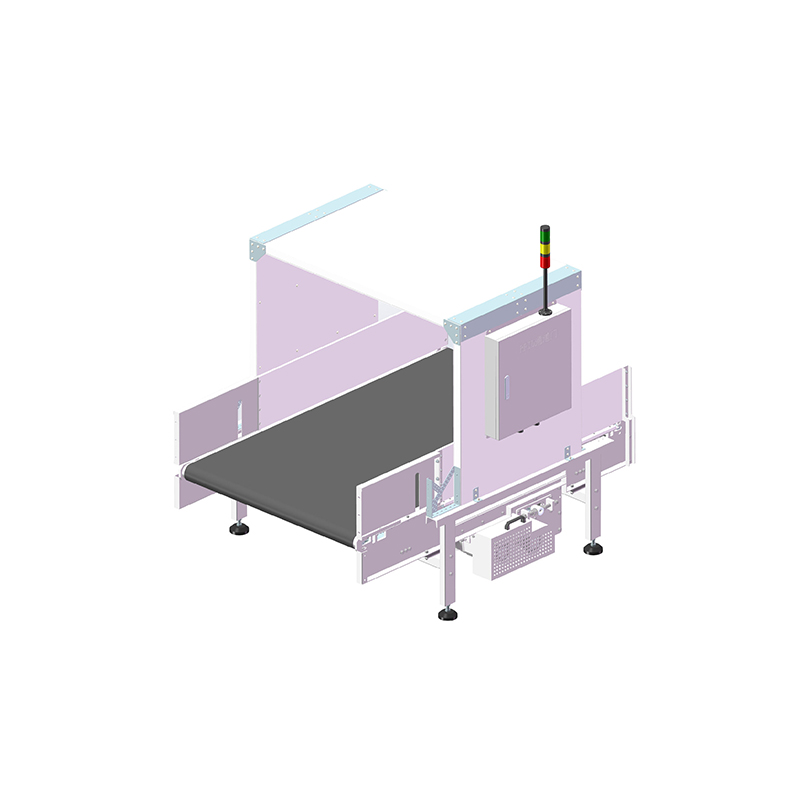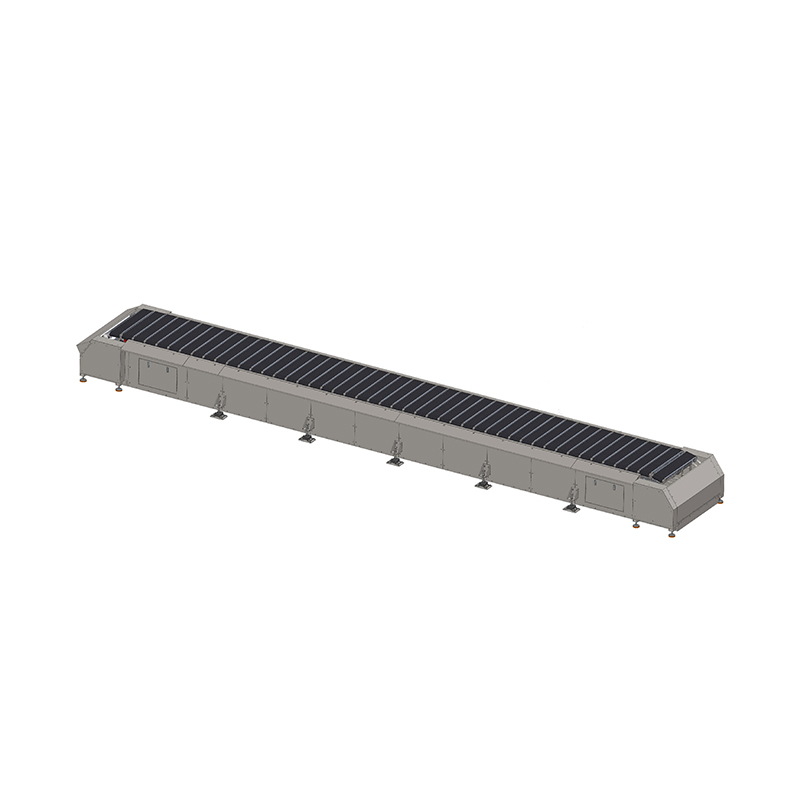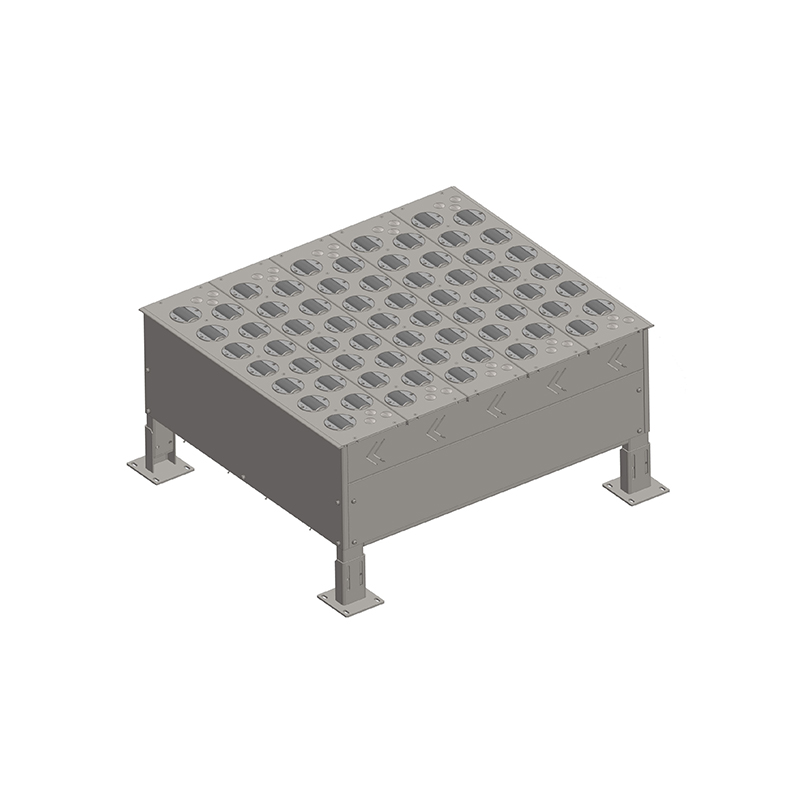Friction-driven balance wheel sorter, the core engine of intelligent logistics sorting
Release Time : 2025-07-14
In the wave of intelligent upgrading in the global logistics industry, automated sorting systems have become the core engine for improving efficiency. As a new generation of intelligent sorting equipment, the friction-driven balance wheel sorting machine is reshaping the operation mode of logistics sorting centers with its high-precision, low-energy consumption and strong adaptability. This article will analyze how this innovative solution empowers smart logistics from four dimensions: technical principles, system architecture, application scenarios and future trends.
1. Technical principles: fusion innovation of friction drive and dynamic balance
The core technology of the friction-driven balance wheel sorting machine comes from the deep integration of the friction drive device and the dynamic balance detection system. Its working principle includes three key links:
Frictionless drive mechanism
The system adopts a dual friction wheel design, the upper friction wheel is fixed to the drive rod through a spring pressure plate, and the lower friction wheel is supported by a static pressure bearing. When the pressure of the spring pressure plate reaches the threshold, a stable static friction is formed between the friction wheel and the drive rod, and the DC motor drives the upper friction wheel to rotate, and the friction force drives the drive rod to move linearly. This design eliminates the mechanical clearance in traditional transmission and achieves smooth operation with zero slip and low noise (<70dB).
Dynamic balance detection and correction
The equipment integrates a high-precision sensor network to monitor the end face runout, radial runout and first-order/second-order harmonics of the wheel hub in real time. Through CCD image recognition technology, the system automatically identifies the material model and matches the sorting parameters, combined with dynamic imbalance measurement and marking coding functions to ensure sorting accuracy of ±0.1mm. For example, in the automotive wheel hub sorting scenario, the system can complete the balance detection and classification of a single piece of material within 3 seconds.
Modular fixture design
The combination of high-precision expansion sleeve fixture and multi-claw chuck can adapt to a variety of materials with a diameter of 200-1200mm and a weight of 5-50kg. The fixture replacement time is <2 minutes, and it supports the expansion of functional modules according to customer customization needs, which significantly improves the flexibility of the equipment.
2. System architecture: four-layer collaborative intelligent sorting system
The system architecture of the friction-driven balance wheel sorter consists of the perception layer, control layer, execution layer and management layer, forming a closed-loop control intelligent ecosystem:
Perception layer: multimodal data acquisition
Through RFID tags, barcode scanners and 3D visual sensors, the size, weight, balance state and other information of the material can be obtained in real time. For example, the system used by a certain enterprise can process 50 pieces of material data stream per second, with an identification accuracy of 99.98%.
Control layer: AI-driven decision center
Equipped with an industrial-grade PLC controller and an integrated deep learning algorithm model. The system can predict the sorting peak based on historical data, dynamically adjust the conveyor belt speed (adjustable from 0.5 to 3m/s) and the sorting path, and optimize the energy consumption ratio by 30%.
Execution layer: high-precision sorting action
The friction-driven linear module and gantry loader are combined to realize the automatic transportation, positioning and sorting of materials. In the actual test of a cross-border e-commerce warehouse, the system's daily processing volume exceeded 120,000 pieces, which is 45% more efficient than the traditional cross-belt sorter.
Management: Data-driven operation and maintenance platform
Storing sorting records through cloud database supports production cycle analysis, abnormal warning and equipment health management. The application of an automotive parts company shows that the system reduces equipment failure rate by 62% and maintenance costs by 41%.
3. Application scenarios: Global penetration from industrial manufacturing to smart logistics
Friction-driven balance wheel sorters have been applied on a large scale in many fields around the world, and their technical value is particularly prominent in three scenarios:
Industrial manufacturing: sorting benchmark for precision parts
In the production of high-precision parts such as automotive wheels and bearings, the system achieves a defective rate of <0.02% through dynamic balance detection and laser coding marking. An application case of an enterprise shows that its sorting line shortens the production line changeover time from 2 hours to 15 minutes, supporting multi-model mixed line production.
Cross-border e-commerce: intelligent support for multilingual and customs clearance
In response to the complex needs of cross-border logistics, the system integrates a multilingual operating interface and an intelligent customs clearance module. In the Hangzhou Cross-border E-commerce Comprehensive Pilot Zone, the equipment uses the Internet of Things technology to achieve real-time tracking of packages, improve customs clearance efficiency by 70%, and shorten the logistics cycle by 3 days.
Green logistics: a practical example of low-carbon sorting
The low-power design (single device power <5kW) and energy recovery system, combined with automatic identification of degradable packaging materials, help logistics centers achieve carbon neutrality goals. The measured data of a regional distribution center showed that the system reduced energy consumption per unit package by 28% and packaging waste by 35%.
4. Future trends: technology integration and ecological co-construction
With the maturity of AI, 5G and digital twin technologies, friction-driven balance wheel sorting machines will evolve in three directions:
Deep integration of AI
Adaptive optimization of sorting rules is achieved through generative AI, such as dynamically adjusting clamp pressure and conveying speed according to real-time order structure. It is expected that by 2026, AI-driven sorting decisions will increase system response speed by 50%.
Human-machine collaboration upgrade
Combined with lightweight collaborative robots (Cobot), a composite sorting unit of "friction drive + robotic arm" is constructed. In the 3C electronics industry, such solutions can make the sorting efficiency of small materials exceed 20,000 pieces/hour, while reducing the human intervention rate to less than 5%.
Digital twin operation and maintenance
Use 5G+edge computing to build a digital mirror of the sorting line to achieve remote fault diagnosis and predictive maintenance. A pilot project showed that the digital twin system reduced equipment downtime by 82% and spare parts inventory costs by 40%.
Paradigm revolution of intelligent sorting
The friction-driven balance wheel sorting machine not only represents a breakthrough in mechanical transmission technology, but also redefines the efficiency boundary of logistics sorting through deep integration with AI and the Internet of Things. From automobile manufacturing to cross-border e-commerce, from single-point optimization to full-link intelligence, this solution is driving the logistics industry towards the ultimate goal of "zero error, zero waste, and zero delay". With the continuous iteration of technology, the sorting center of the future may evolve into an intelligent body with autonomous decision-making capabilities, injecting stronger momentum into the global supply chain.








